Have you ever wondered about the mysterious objects lurking in the cosmic depths of galaxies? They are known as supermassive black holes, fascinating celestial entities that defy our understanding of the universe. In this article, we will embark on a journey to unravel the enigma of supermassive black holes at the centers of galaxies. From their origins to their profound influence on galaxy evolution, we will delve into the characteristics, behavior, observations, and theories surrounding these massive gravity wells. Get ready to explore the depths of the cosmos and expand your knowledge of these captivating cosmic phenomena!
Contents
- Understanding Supermassive Black Holes
- Formation and Location
- Characteristics and Behavior
- Observations and Discoveries
- Theories and Models
- The Ophiuchus Enigma
- Conclusion
-
Frequently Asked Questions
- 1. How are black holes formed?
- 2. What is the size of a supermassive black hole?
- 3. Can anything escape the gravitational pull of a black hole?
- 4. Do supermassive black holes exist in every galaxy?
- 5. How do supermassive black holes influence galaxy evolution?
- 6. Can supermassive black holes collide with each other?
- 7. How do astronomers study supermassive black holes?
- 8. Are there any dangers associated with supermassive black holes?
- 9. Can black holes die or disappear?
- 10. Is it possible to travel through a black hole?
- References
-
Frequently Asked Questions
- 1. How does a black hole form?
- 2. Can anything escape the gravitational pull of a black hole?
- 3. Are supermassive black holes bigger than regular black holes?
- 4. Do all galaxies have a supermassive black hole at their center?
- 5. How do supermassive black holes influence galaxy evolution?
- 6. What are accretion disks around black holes?
- 7. Can black holes collide with each other?
- 8. How do scientists study supermassive black holes?
- 9. Are there any alternative theories to explain the phenomena of black holes?
- 10. How do simulations help in understanding supermassive black holes?
- References
- Read More
Understanding Supermassive Black Holes
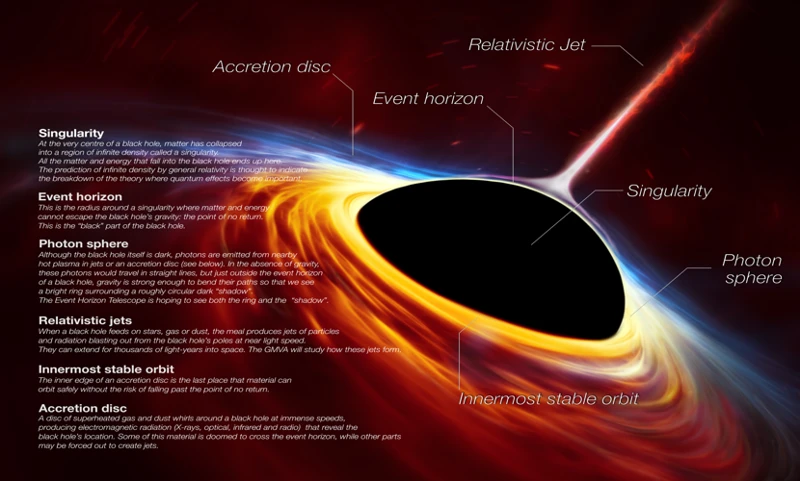
Supermassive black holes are extraordinary cosmic entities that have captivated the minds of scientists and astronomers for decades. These black holes, characterized by their immense mass and gravitational pull, continue to baffle us with their perplexing nature. Upon venturing into the realm of supermassive black holes, one quickly realizes their significance in understanding the mysteries of the universe. From exploring the theoretical concepts of black holes to studying their formation and behavior, scientists have been on a quest to comprehend these cosmic giants. With the aid of advanced telescopes, groundbreaking discoveries have shed light on the perplexing phenomena surrounding supermassive black holes. Get ready to dive into the depths of the cosmos and uncover the secrets guarded by these enigmatic celestial objects.
1. What is a Black Hole?
A black hole is a fascinating celestial object that is formed when a massive star exhausts its fuel and collapses under its own gravitational pull. This collapse results in a region in space where gravity is so intense that nothing, not even light, can escape its grasp. The boundary of a black hole, called the event horizon, marks the point of no return. Beyond this point, the gravitational pull is so strong that not even particles or electromagnetic radiation can overcome it.
Black holes come in different sizes, ranging from stellar black holes to intermediate black holes, and the largest of them all, supermassive black holes. Stellar black holes are formed from the remnants of massive stars that undergo supernova explosions. These black holes typically have a mass several times greater than that of our Sun.
Supermassive black holes, on the other hand, are much larger in size, with masses millions or even billions of times greater than that of a stellar black hole. They are found at the centers of most, if not all, large galaxies, including our own Milky Way. The existence of supermassive black holes is believed to be closely linked to the formation and evolution of galaxies.
Understanding black holes has been a subject of intense scientific study and has led to incredible advancements in our knowledge of the universe. Although they are invisible to direct observation, astronomers have been able to detect black holes indirectly through their effects on nearby objects, such as the gravitational interactions they have with stars and gas.
To learn more about the fascinating astronomical discoveries related to black holes and their effects, you can explore the concept of Ophiuchus romantic compatibility, delve into the mythological significance of black holes in Chinese literature, or even study the extraordinary collision of a comet with Jupiter in the case of Comet Shoemaker-Levy 9 and Jupiter. Each of these topics offers a unique perspective on the cosmic wonders that black holes present.
2. Types of Black Holes
When it comes to black holes, there are primarily three types: stellar black holes, intermediate black holes, and supermassive black holes. Stellar black holes are formed from the remnants of massive stars that have undergone a supernova explosion. These black holes have masses ranging from a few times that of our Sun to around 100 times the solar mass. Intermediate black holes, as the name suggests, fall in between stellar and supermassive black holes in terms of mass. They have masses on the order of thousands to millions of solar masses, making them a bridge between the two extremes.
On the other hand, supermassive black holes are the giants among black holes, with masses ranging from millions to billions of solar masses. This type of black hole is typically found at the centers of galaxies, including our very own Milky Way. The origin of these supermassive black holes is still a topic of intense research and speculation.
To better understand the differences between these types of black holes, we can look at their size, mass, and formation processes. Stellar black holes are relatively small, with a size ranging from 10 to 100 kilometers in diameter. Intermediate black holes are larger, with a size comparable to a small star cluster. Supermassive black holes, however, are enormous in size, stretching across millions of kilometers – larger than the distance between the Earth and the Sun.
Each type of black hole plays a unique and significant role in shaping the cosmos. Stellar black holes are involved in the formation of galaxies, while intermediate black holes are thought to be building blocks for supermassive black holes. Supermassive black holes, as we will explore in more detail, have a profound influence on the evolution of galaxies, their structures, and even the stars and gas surrounding them.
The understanding of black holes is not complete without comprehending the three distinct types: stellar black holes, intermediate black holes, and supermassive black holes. Each type showcases its own intriguing characteristics and contributes to our understanding of the cosmic mysteries that lie within the depths of the universe.
3. Supermassive Black Holes
Supermassive black holes are a fascinating area of study in astrophysics. These are black holes that weigh millions or even billions of times more than our Sun. Unlike their stellar counterparts, which form from the explosive deaths of massive stars, the formation of supermassive black holes remains a puzzle. One hypothesis suggests that they may have grown over time through a process called accretion. This occurs when matter, such as gas and dust, falls into the gravitational well of the black hole, adding to its mass. Another theory proposes that supermassive black holes formed very early in the universe’s history, perhaps even before the galaxies themselves. These cosmic behemoths reside at the centers of most galaxies, including our own Milky Way. They have a profound impact on the dynamics of their host galaxies, influencing the movement of stars and the formation of new stars. The study of supermassive black holes is crucial for understanding the formation and evolution of galaxies, as well as unraveling the mysteries of the universe on a grand scale.
Formation and Location
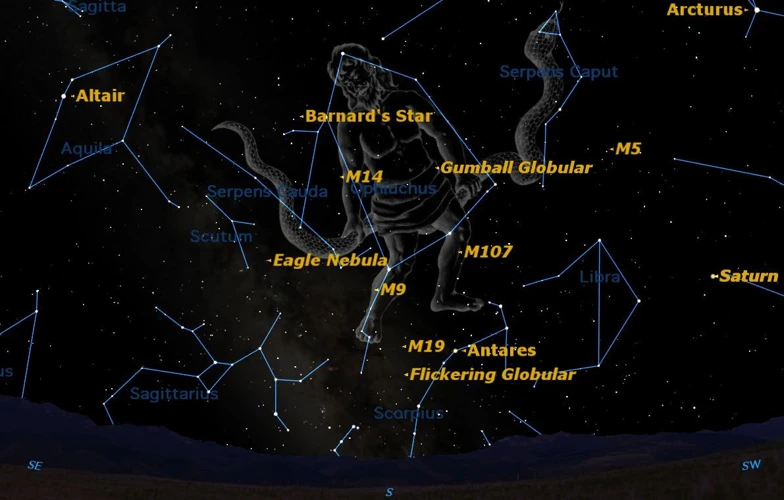
The formation of supermassive black holes is a complex process that occurs over billions of years, and their location in the universe is not random. Scientists believe that supermassive black holes form through two main mechanisms: the collapse of massive stars and the accretion of matter. When a massive star reaches the end of its life cycle, it undergoes a catastrophic collapse, resulting in the formation of a black hole. Alternatively, supermassive black holes can grow through the continuous accretion of gas and dust from their surrounding environment. These black holes are predominantly found at the centers of galaxies, including our own Milky Way. This localization is due to the gravitational interactions between the black hole and the surrounding stars and gas. As matter accumulates in the central region of a galaxy, it forms a dense stellar cluster, eventually leading to the formation of a supermassive black hole. The intricate dance between the black hole and its galactic environment shapes the growth and dynamics of both, playing a significant role in shaping the universe as we know it.
1. Origins of Supermassive Black Holes
The origins of supermassive black holes continue to be an area of active research and speculation for astronomers and physicists. One prevailing theory suggests that these behemoths could have formed from the collapse of massive stars, similar to the formation of stellar-mass black holes. However, the challenge lies in explaining how these black holes grew to such colossal sizes. Another possibility is that supermassive black holes formed through direct collapse, where a dense concentration of matter collapses under its gravitational pull without the intermediate step of a star. This process could have occurred in the early universe when conditions were ideal for the rapid formation of these massive objects.
In recent years, another intriguing theory has emerged, proposing that supermassive black holes may have originated from the merging of multiple smaller black holes. As galaxies merge and interact, their black holes can also combine, leading to the formation of a supermassive black hole at their center. This theory provides a possible explanation for the rapid growth and immense size of supermassive black holes.
Regardless of their origins, supermassive black holes are thought to have existed since the early stages of the universe. The challenge for scientists lies in determining which theory or combination of processes best explains their formation and growth. By studying the properties and behaviors of these cosmic giants, researchers hope to unlock the secrets of their origins and unravel the mysteries of the universe.
2. Black Holes at the Centers of Galaxies
Black Holes at the Centers of Galaxies: At the heart of most galaxies lies a supermassive black hole, exerting its powerful gravitational influence over the surrounding cosmic environment. These black holes are believed to have formed through various processes, such as the collapse of massive stars or the accumulation of smaller black holes merging together over time. The presence of a supermassive black hole at the center of a galaxy is inferred through observations of galactic dynamics, such as the orbits of stars and gas clouds in the galactic nucleus. The size and mass of these black holes vary, with some reaching billions of times the mass of our Sun.
The role of supermassive black holes in the evolution of galaxies is significant. As matter gets pulled into these black holes, it forms an accretion disk, a swirling disk of gas and dust around the black hole. This disk emits intense radiation as it heats up due to the extreme gravitational forces. In some cases, powerful jets of particles are ejected from the black hole along its axis of rotation, creating immense cosmic structures called radio galaxies or quasars.
The presence of a supermassive black hole at the center of a galaxy has profound effects on the surrounding environment. The gravitational pull of the black hole can influence the orbits and velocities of stars within the galaxy, potentially leading to the formation of galactic bulges and spiral arms. Additionally, the energy released from the accretion disk and the jets can heat up or remove gas from the galactic disk, affecting star formation processes and altering the overall structure of the galaxy.
Studying black holes at the centers of galaxies has opened up new avenues for understanding the evolution and dynamics of galaxies as a whole. By studying the properties of these black holes and their impact on galactic evolution, scientists gain valuable insights into the interconnectedness of cosmic phenomena and the fundamental nature of our universe.
Characteristics and Behavior
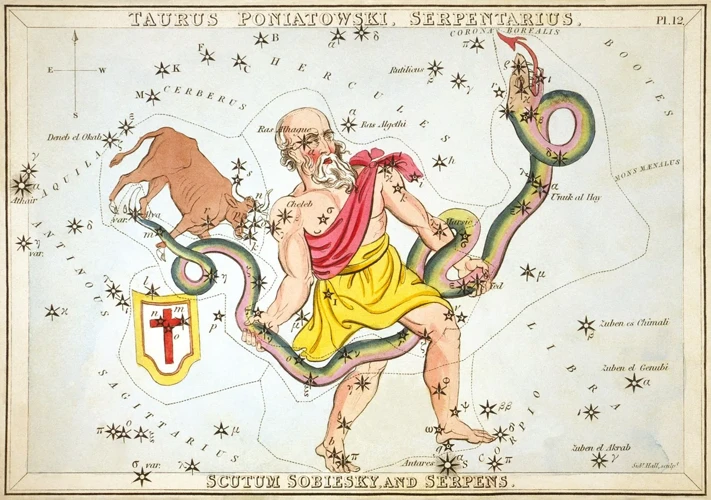
Supermassive black holes exhibit fascinating characteristics and behaviors that make them truly astonishing cosmic entities. One of their defining features is their massive gravity wells, which arise from their immense mass concentrated in a relatively small space. These gravity wells are so powerful that they can trap even light itself, leading to the term “black hole.” Another intriguing behavior of supermassive black holes is the formation of accretion disks—circular structures of gas and dust that surround the central black hole. As matter falls into the black hole, it heats up and emits intense energy in the form of X-rays, creating the accretion disk. This energy-generating process can also give rise to the formation of jets—high-speed streams of particles that shoot out from the black hole’s poles. These jets can extend across vast cosmic distances and have a profound impact on the surrounding galaxy. The interplay between the immense gravity, accretion disks, and jets makes the study of supermassive black holes a stimulating field of research and exploration in astrophysics.
1. Massive Gravity Wells
When it comes to supermassive black holes, one of the most intriguing aspects is their massive gravity wells. These cosmic giants possess an enormous gravitational pull that is so strong, nothing can escape its grasp once it gets too close, not even light itself. The gravity near a supermassive black hole is so intense that it warps the fabric of space and time, creating a gravitational well that drags anything nearby towards it. Imagine a deep well, but instead of water, it’s an infinite void with an unimaginable mass at its center. Anything that ventures too close to the event horizon, the point of no return, becomes trapped in the clutches of the black hole’s gravity. This includes stars, gas clouds, and even entire galaxies that get too close to the voracious appetite of these cosmic behemoths. The immense gravity of supermassive black holes shapes the movement of stars and gas within their host galaxies, playing a crucial role in the formation and evolution of galactic structures. It is through studying these massive gravity wells that we gain insights into the profound influence these black holes have on the cosmic tapestry of our universe.
2. Accretion Disks and Jet Formation
Accretion disks play a crucial role in the behavior of supermassive black holes and are a key component in understanding their formation and activity. These disks are made up of gas, dust, and other celestial material that spirals inwards towards the black hole due to its immense gravitational pull. As the material gets closer to the event horizon, it forms a swirling disk-like structure, heating up and emitting intense amounts of radiation in the process. This radiation can be observed across various wavelengths, from radio waves to X-rays.
The formation of jets is another fascinating phenomenon associated with supermassive black holes. These jets are powerful streams of particles that shoot out from the vicinity of the black hole at nearly the speed of light. While the exact mechanism of jet formation is not yet fully understood, scientists believe that it is closely related to the accretion disk. As material falls into the black hole, some of it gets redirected away from the disk, ejected in the form of these high-speed jets. Jets can extend for thousands of light-years and have a significant impact on the surrounding galaxy, affecting its structure and star formation processes.
Understanding the formation and behavior of accretion disks and jets is vital for comprehending the overall behavior of supermassive black holes. Scientists use advanced telescopes and observational techniques to study these phenomena, enabling them to gain valuable insights into the intricate processes occurring at the centers of galaxies harboring these cosmic powerhouses.
3. Influence on Galaxy Evolution
The influence of supermassive black holes on galaxy evolution is a topic of great interest and significance in astrophysics. These cosmic behemoths play a crucial role in shaping the properties and characteristics of their host galaxies. The immense gravitational pull of a supermassive black hole not only affects nearby stars and gas but also influences the overall dynamics and structure of the galaxy. One of the primary ways in which supermassive black holes impact galaxy evolution is through a process called galactic feedback. As matter falls into the black hole’s gravitational well, it forms an accretion disk and releases an enormous amount of energy in the form of powerful jets and radiation. These energetic outflows can heat up the surrounding gas, prevent further star formation, and even expel gas from the galaxy, thus regulating the growth of stars. The gravitational interactions between supermassive black holes and other objects, such as merging galaxies, can lead to dramatic events like galactic mergers, triggering bursts of star formation and shaping the overall morphology of the galaxy. Supermassive black holes have a profound impact on the evolution of galaxies, contributing to the complex interplay between the dark heart of the galaxy and its stellar population. Understanding this influence is crucial for unraveling the mysteries of galaxy formation and evolution.
Observations and Discoveries
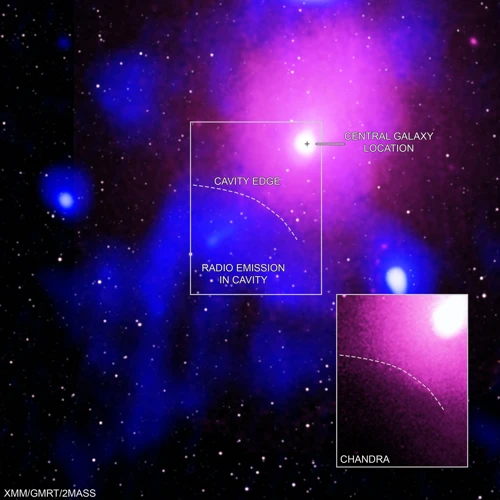
Over the years, scientists have made numerous remarkable observations and groundbreaking discoveries that have contributed to our understanding of supermassive black holes. Early discoveries of powerful X-ray emissions from distant galaxies sparked intrigue and led to the identification of active galactic nuclei (AGN), which are powered by supermassive black holes at their centers. These AGN emit intense radiation, jets of particles, and accretion disks of swirling matter. Advances in technology and the launch of sophisticated space telescopes, such as the Chandra X-ray Observatory, have allowed scientists to capture detailed images of supermassive black holes and study their properties in greater depth. More recently, the Event Horizon Telescope collaboration achieved an unprecedented feat by capturing the first-ever image of a supermassive black hole’s shadow at the heart of the M87 galaxy. These observations and discoveries have provided valuable insights into the behavior, characteristics, and interactions of supermassive black holes, bringing us closer to unraveling their mysteries and deepening our knowledge of the cosmos.
1. Early Discoveries
1. Early Discoveries: The exploration of supermassive black holes began with the detection of quasars in the 1960s. These incredibly bright and distant celestial objects piqued the curiosity of astronomers and led to the recognition that they were powered by the immense gravitational pull of supermassive black holes. In 1971, the first direct evidence of a supermassive black hole was discovered in the galaxy known as Cygnus A. Through observations using radio telescopes, astronomers detected a powerful source of radio emissions emanating from the center of the galaxy, suggesting the presence of a supermassive black hole. Subsequent observations in the 1980s and 1990s further reinforced the existence of supermassive black holes at the centers of galaxies. The technological advancements in telescopes and instruments, such as X-ray and infrared telescopes, allowed scientists to delve deeper into the mysteries surrounding these cosmic giants. The early discoveries laid the foundation for further exploration and understanding of supermassive black holes and their role in shaping the universe.
2. Active Galactic Nuclei
Active Galactic Nuclei (AGNs) are one of the most intriguing phenomena associated with supermassive black holes. These compact regions at the centers of galaxies exhibit powerful and energetic activities that set them apart from typical galactic nuclei. AGNs are known to emit enormous amounts of radiation across the electromagnetic spectrum, from radio waves to X-rays and even gamma rays. This radiation is believed to come from the accretion disks that form around supermassive black holes. Accretion disks consist of cosmic material, such as gas and dust, swirling and spiraling into the black hole under the influence of its immense gravitational pull. This material becomes incredibly heated and emits energy as it falls into the black hole. The intense radiation emitted by AGNs makes them some of the brightest objects in the universe.
Notable features of Active Galactic Nuclei include relativistic jets and powerful outflows of ionized gas. Relativistic jets are highly collimated streams of particles and radiation that extend far beyond the galaxy itself. These jets can reach speeds close to the speed of light and emit powerful beams of energy. They are believed to be the result of the black hole’s intense gravitational forces manipulating and accelerating nearby matter.
AGNs play a crucial role in the evolution of galaxies. The energy released by the accretion process and the powerful jets can have a significant impact on the surrounding interstellar medium. It can heat and disrupt nearby gas clouds, promoting star formation or quenching it depending on the circumstances. The energy released by AGNs can also regulate the growth of the supermassive black holes themselves, preventing them from consuming all the surrounding material and becoming even more massive.
Studying active galactic nuclei allows scientists to understand the complex interplay between supermassive black holes and their host galaxies. By investigating the properties and behavior of AGNs, astronomers gain insights into the growth and evolution of galaxies throughout cosmic history. The study of AGNs has also contributed to our knowledge of fundamental astrophysical concepts such as accretion physics, relativistic jets, and the dynamics of compact objects. Scientists continue to explore and analyze AGNs using various astronomical observatories and sophisticated telescopes, hoping to uncover more secrets surrounding these fascinating cosmic powerhouses.
3. Recent Groundbreaking Observations
In recent years, the field of astronomy has witnessed groundbreaking observations that have deepened our understanding of supermassive black holes. These observations have been made possible through advancements in technology and the development of sophisticated telescopes, enabling scientists to explore the depths of the cosmos with unprecedented clarity. One notable observation is the detection of gravitational waves, ripples in the fabric of spacetime, predicted by Albert Einstein’s theory of general relativity. The Laser Interferometer Gravitational-Wave Observatory (LIGO) collaboration made history in 2015 by directly detecting gravitational waves emanating from the merger of two black holes. This landmark discovery confirmed the existence of black holes and opened up new avenues for studying their properties and behavior. Additionally, the Event Horizon Telescope (EHT) project, a global collaboration of radio telescopes, captured the first-ever image of a supermassive black hole in the galaxy M87 in 2019. This remarkable feat provided visual evidence of the intense gravitational pull of these cosmic behemoths and offered valuable insights into their structure. As technology continues to advance, scientists anticipate more groundbreaking observations that will contribute to our ever-evolving understanding of supermassive black holes and the mysteries they hold within their dark depths.
Theories and Models
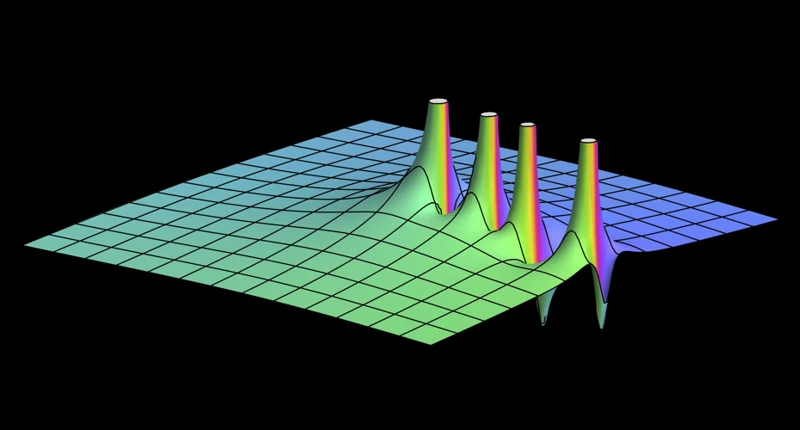
The study of supermassive black holes has given rise to various theories and models that aim to explain their existence and behavior. One of the fundamental frameworks used to understand these cosmic entities is general relativity, which describes gravity as the curvature of space-time. This theory, put forth by Albert Einstein, forms the basis for our understanding of black hole physics and provides a mathematical framework to explain their gravitational effects. Additionally, astrophysical simulations and models play a crucial role in unraveling the intricate dynamics of supermassive black holes. Through simulations, scientists can recreate the conditions surrounding these cosmic behemoths, providing insights into their formation, growth, and interactions with their environment. These theoretical developments, combined with advancements in observational techniques, bring us closer to deciphering the mysteries of supermassive black holes and their role in shaping the universe.
1. General Relativity and Black Hole Physics
General relativity is a fundamental theory in physics that revolutionized our understanding of gravity. Developed by Albert Einstein, it provides the framework to explain the behavior of massive objects in the presence of gravity, including black holes. According to general relativity, black holes are formed when matter collapses under its own gravity, creating a region of spacetime with an incredibly strong gravitational field from which nothing can escape, not even light.
One of the key concepts in general relativity is the idea of spacetime curvature. Mass and energy curve the fabric of spacetime, and in the case of black holes, the curvature becomes so extreme that it forms a singularity at the center. The singularity is a point of infinite density and zero volume, where the laws of physics as we know them break down.
General relativity also predicts the existence of an event horizon, a boundary beyond which nothing can escape the gravitational pull of a black hole. Anything that crosses the event horizon is irreversibly drawn into the black hole, contributing to its mass.
Black hole physics explores the properties and behavior of black holes based on the principles of general relativity. This field of study involves understanding the dynamics of matter falling into a black hole, the spacetime distortions near the event horizon, and the gravitational waves that are emitted when black holes merge.
Scientists have used general relativity and black hole physics to make remarkable predictions and observations. For example, the phenomenon of gravitational lensing, where the gravitational field of a black hole bends light from distant objects around it, has been observed and confirmed. This phenomenon has provided evidence for the existence and properties of black holes.
The study of general relativity and black hole physics has paved the way for our understanding of the nature and characteristics of black holes. Through mathematical equations and observations, scientists continue to expand our knowledge of these intriguing cosmic entities.
2. Simulations and Astrophysical Models
Simulations and astrophysical models play a crucial role in our quest to understand the complex dynamics and behavior of supermassive black holes. Through advanced computer simulations, scientists can recreate the extreme conditions near these massive objects and study the intricate processes occurring within their vicinity. These simulations utilize complex algorithms and equations derived from our current understanding of physics and astrophysics. With the aid of computational models, scientists can better grasp how matter accretes onto the black hole, the formation and behavior of accretion disks, and the powerful jets of particles emanating from the black hole’s vicinity. These models allow scientists to explore different scenarios and test various hypotheses, providing valuable insights into the mechanisms governing black hole activity. By comparing the results of simulations with observations, scientists can refine their understanding of supermassive black holes and validate theoretical predictions. The continuous improvement of simulations and models enables us to deepen our understanding of these enigmatic cosmic objects and sheds light on the profound role they play in shaping the evolution of galaxies.
The Ophiuchus Enigma
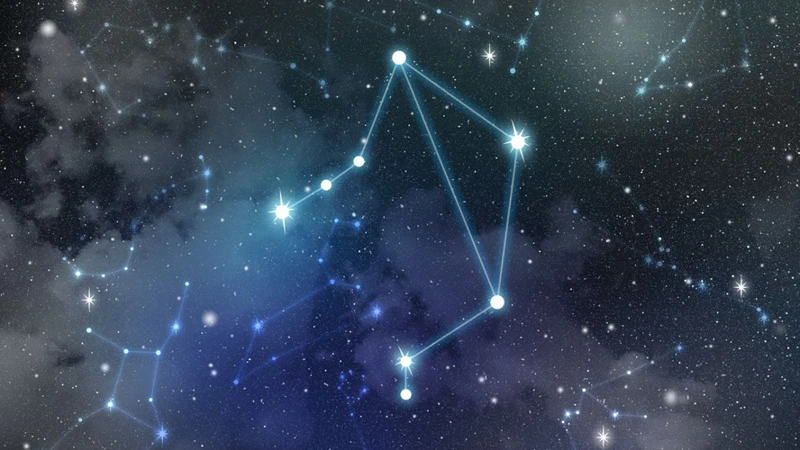
At the intersection of mystery and scientific curiosity lies the enigma of Ophiuchus. This enigmatic celestial object has caught the attention of astronomers and astrophysicists around the world, sparking a quest for answers. What makes Ophiuchus particularly intriguing is its potential connection to supermassive black holes. With its complex nature and unusual characteristics, Ophiuchus presents a unique puzzle waiting to be solved. Scientists are tirelessly investigating this cosmic anomaly, aiming to unravel its secrets and shed light on the mysteries that lie within. Join us as we delve into the depths of the Ophiuchus enigma and explore its possible link to the fascinating world of supermassive black holes.
1. The Enigma’s Connection to Supermassive Black Holes
The Ophiuchus Enigma has long been a subject of intrigue and fascination for astrophysicists and astronomers. It beckons our attention due to its deep connection to the mysterious supermassive black holes that reside at the centers of galaxies. This cosmic enigma revolves around the Ophiuchus galaxy cluster, specifically its central galaxy known as NGC 1275. Scientists have discovered a complex interplay between the supermassive black hole at the center of NGC 1275 and the surrounding gas and dust. This connection has presented a puzzling scenario where the immense gravity of the supermassive black hole interacts with the surrounding matter, giving rise to truly captivating phenomena. The Ophiuchus Enigma offers a unique opportunity to deepen our understanding of supermassive black holes and their role in shaping the evolution of galaxies. Further research and observations are necessary to unlock the secrets held within this cosmic enigma and shed light on the complex dynamics at play between supermassive black holes and their surrounding environments.
2. Investigating Ophiuchus’ Supermassive Black Hole
When it comes to investigating Ophiuchus’ supermassive black hole, scientists have faced a unique and intriguing challenge. Located in the heart of the Ophiuchus galaxy cluster, this supermassive black hole has posed questions about its behavior and interactions with its surroundings. One particular focus of investigation has been the fueling mechanism of this black hole, as it exhibits an unusually low level of activity despite its massive size. Researchers have utilized a combination of observations from telescopes like the Chandra X-ray Observatory and simulations to gain deeper insights into this cosmic enigma. By analyzing the dynamics of the surrounding gas and studying the accretion process onto the black hole, scientists aim to unravel the secrets behind Ophiuchus’ seemingly quiescent nature. The investigations also extend to understanding the role of Ophiuchus’ supermassive black hole in the overall evolution of the galaxy cluster. Through this ongoing research, astronomers strive to paint a clearer picture of these supermassive black holes and their profound influence on their cosmic surroundings.
Conclusion

In conclusion, the study of supermassive black holes serves as a gateway to unraveling the profound mysteries of the universe. These awe-inspiring cosmic entities, with their immense mass and gravitational pull, continue to astound scientists and astronomers alike. Through research and observation, we have gained valuable insights into the formation, characteristics, and behavior of supermassive black holes. They not only shape the structure of galaxies but also play a crucial role in galactic evolution.
From the early discoveries of their existence to recent groundbreaking observations, we have expanded our understanding of these enigmatic objects. The theories of general relativity and astrophysical models have provided frameworks for comprehending the physics of black holes. Simulations and advanced telescopes have allowed us to delve deeper into their mysteries, revealing accretion disks, jet formations, and their impact on galaxy evolution.
One intriguing enigma that has captured the attention of scientists is the Ophiuchus galaxy cluster. Further investigations into the massive black hole at its center present an exciting opportunity to delve deeper into the secrets of these celestial giants.
As we continue to explore the vast expanse of the cosmos, the study of supermassive black holes will undoubtedly play a pivotal role in our quest to uncover the mysteries of the universe. Through ongoing research and technological advancements, we can look forward to further breakthroughs that will expand our understanding of these extraordinary cosmic entities.
In this journey of unraveling the secrets of supermassive black holes, we come to realize the immense power and mystery that lies within the depths of the universe. It is a reminder of how much more there is to discover, and that the cosmos continues to hold captivating wonders waiting to be explored.
Related articles:
- The Ophiuchus Romantic Compatibility: Decoding the 13th Zodiac Sign
- The Monkey King in Chinese Literature: A Literary Icon
- Comet Shoemaker-Levy 9: A Cosmic Collision with Jupiter
Frequently Asked Questions

1. How are black holes formed?
Black holes are formed when a massive star runs out of nuclear fuel and collapses under its own gravity. This process results in a singularity, a point of infinite density, where the laws of physics as we know them break down.
2. What is the size of a supermassive black hole?
Supermassive black holes can range in size from thousands to billions of times the mass of our Sun. They are significantly larger than stellar black holes, which typically have a mass of a few times that of the Sun.
3. Can anything escape the gravitational pull of a black hole?
Once an object crosses the event horizon of a black hole, its gravitational pull is so strong that nothing, not even light, can escape. This is what gives black holes their name, as they appear as “black” regions in space.
4. Do supermassive black holes exist in every galaxy?
While supermassive black holes are believed to exist in the centers of most, if not all, galaxies, not all galaxies have supermassive black holes. The presence of a supermassive black hole depends on various factors, including the galaxy’s age and its history of star formation.
5. How do supermassive black holes influence galaxy evolution?
Supermassive black holes play a crucial role in galaxy evolution. Their immense gravity can disrupt the orbits of stars and gas in the galaxy, triggering the formation of new stars and affecting the overall structure and dynamics of the galaxy.
6. Can supermassive black holes collide with each other?
Yes, supermassive black holes can collide and merge with each other. This occurs when galaxies merge, bringing their central black holes in close proximity. The merging of black holes leads to an even more massive black hole.
7. How do astronomers study supermassive black holes?
Astronomers study supermassive black holes through various methods. They observe the effects of their gravity on surrounding objects, such as the motion of stars or the accretion disks of gas and dust. They also use telescopes to detect the radiation emitted by matter falling into the black hole.
8. Are there any dangers associated with supermassive black holes?
Supermassive black holes pose no immediate danger to Earth or our solar system unless we were to venture extremely close to one. Their influence is felt primarily within the galaxies they inhabit.
9. Can black holes die or disappear?
Black holes do not die or disappear. However, according to current theories, they can slowly lose mass over time through a process called Hawking radiation. This process is extremely slow, and for supermassive black holes, it would take an unimaginably long time for them to significantly decrease in mass.
10. Is it possible to travel through a black hole?
According to our current understanding, it is highly unlikely that anyone could survive a journey inside a black hole. The extreme tidal forces and the intense gravitational effects would stretch and compress any matter, ultimately tearing it apart.
References
Frequently Asked Questions

1. How does a black hole form?
A black hole forms when a massive star collapses under its own gravitational force, causing an intense concentration of mass in a small space.
2. Can anything escape the gravitational pull of a black hole?
No, once an object crosses the event horizon of a black hole, its gravitational pull is so strong that not even light can escape.
3. Are supermassive black holes bigger than regular black holes?
Yes, supermassive black holes are millions or even billions of times more massive than regular black holes.
4. Do all galaxies have a supermassive black hole at their center?
It is believed that most, if not all, galaxies have a supermassive black hole at their center, including our own Milky Way.
5. How do supermassive black holes influence galaxy evolution?
Supermassive black holes can inject energy into their host galaxies through the jets and outflows they create, affecting the formation of stars and the structure of galaxies.
6. What are accretion disks around black holes?
An accretion disk is a rotating disk of hot gas and dust that forms around a black hole as matter is pulled into it. These disks can be extremely bright and emit various forms of radiation.
7. Can black holes collide with each other?
Yes, when galaxies merge, their supermassive black holes can also merge. This cosmic collision can result in the formation of an even more massive black hole.
8. How do scientists study supermassive black holes?
Scientists study supermassive black holes through observations of their effects on surrounding matter and by detecting the radiation emitted from the accretion disks around them.
9. Are there any alternative theories to explain the phenomena of black holes?
While the theory of general relativity provides the most widely accepted explanation for black holes, some scientists are exploring alternative theories, such as modified gravity or the existence of exotic particles, to further understand these cosmic enigmas.
10. How do simulations help in understanding supermassive black holes?
Simulations allow scientists to recreate the conditions near supermassive black holes and observe how matter behaves in their vicinity. These simulations help in testing various theories and understanding the complex dynamics of black holes.







